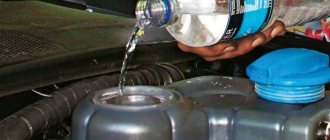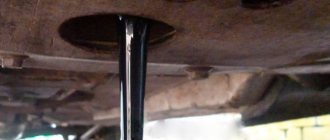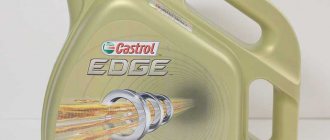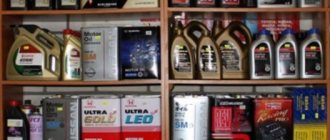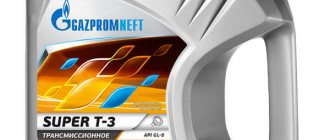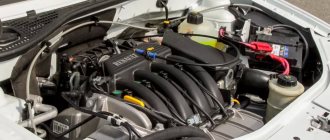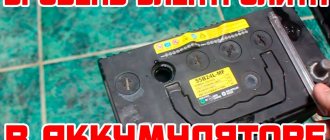Distilled water for batteries
The battery is an integral part of almost any modern device or car. The battery, like all components of the car, requires care and compliance with recommendations during operation - one of the rules that must be followed is monitoring the level of distilled water in the battery.
It is required for the normal passage of all chemical processes occurring in the battery. When the level drops, you can fill the battery with distilled water yourself. How to do it yourself? How much should I add? How to track the level?
Determination of electrolytic fluid in a battery
There are two types of energy sources commonly used in the automotive industry today:
- Maintenance-free devices are enclosed in a sealed housing that completely prevents access from the outside. They, as a rule, exhaust their resource and must be replaced. You cannot restore their functionality on your own. The only thing the owner of such a battery can do is charge it as needed.
- Maintained - require constant attention and monitoring. It is necessary to regularly monitor the level of the electrolyte solution, as well as its density and the condition of the plates.
How to find out the electrolyte level
Electrolytic liquid can change its volume as it is stored and used. How can you check the electrolyte level in a battery? There are several options, each of which can be used in a specific situation:
- According to special marks applied to the body. Some energy sources have two horizontal lines parallel to each other on the outer surface of the housing in its upper part. The bottom one is marked “min” - shows the minimum possible level of the electrolyte solution. The top one has the inscription “max” - the maximum permissible limit of the liquid medium.
- By visual inspection. It allows you to determine the approximate amount of liquid content. In the absence of tags and other available means, it is enough to simply unscrew the plugs on the top cover of the case, while installing the device on a flat horizontal surface. Looking inside, especially if there is good lighting, you can understand by the following criteria whether the solution is enough or not:
- the plates are completely hidden by the liquid medium, there are no leaks on the outside of the case - the level is normal;
- the electrodes are visible (they are level or above the surface of the liquid) – topping up is required.
- By performing simple measurements. The electrolyte level in the battery can be checked using:
- Hydrometer device. It will allow you to find out the density of the liquid in each jar, which will make it possible to draw a conclusion about its quantity. We lower it into each hole one by one, draw up the solution using a bulb and look at the readings. If the value is higher than normal, then the level is insufficient.
- Available means: a transparent juice tube or the same body of a ballpoint pen. We lower the tube into the hole in place of the unscrewed cap until it rests against the top edge of the jar. We pinch the end remaining on the surface with a finger, thus blocking the flow of air into it. Holding your finger, remove the tube and measure the height of the column of liquid trapped inside it. At a normal electrolyte level, its value should be in the range from 11 to 15 mm.
Low battery electrolyte level
How can you tell if your battery has low electrolyte levels? This is very eloquently evidenced by:
- significant increase in density;
- the appearance of plates above the surface of the liquid medium.
There may be several reasons for this:
- Evaporation of distilled water is the most common factor in volume reduction in the summer. As is known, too high outdoor temperatures provoke evaporation processes. And when using the battery during this period, it is very hot under the hood.
- Liquid boiling over due to a malfunction of the temperature relay-regulator.
- As a result of battery discharge, some of the acid is consumed for electrochemical reactions.
A decrease in the electrolyte level below normal in the battery leads to very serious consequences:
- firstly, a solution of increased concentration promotes accelerated destruction of the plate material;
- secondly, that part of the electrode surface that is located above the liquid boundary undergoes sulfation.
In both cases, the outcome is the same: rapid loss of capacity and premature failure of the energy source. This means it will need to be replaced. Where is the guarantee that the new battery will not lose its functionality just as quickly?
Option one is to learn how to properly operate and maintain the battery, and first of all, maintain the liquid component at normal levels.
What should be the electrolyte level in the battery? The norm is when the electrolyte solution is 1–1.5 centimeters above the electrode plates, completely covering them when the car is moving.
Moreover, the electrolyte level must be the same in each jar - this is very important for reliable battery operation.
What can happen when opening the case?
If you open the battery case, this will lead to the fact that the water from the electrolyte will constantly evaporate and the battery will need to be refilled as if it were being serviced. Disassembling the battery in any way will void the warranty . For modern products, the manufacturer's warranty can range from 12 to 36 months.
Important! If the battery is under warranty, then before opening it and repairing it yourself, take it to a service center, maybe they can help you there.
Disassembling a battery is not always possible without chips getting into its housing. In addition, during operation of a battery opened in this way, dust and dirt may get inside the cans. Foreign objects inside the case, to put it mildly, do not contribute to increasing the service life of the product.
Do you have any questions, haven’t been able to solve the problem, or have something to add to the article? Then write to us about it in the comments. This will help make the material more complete and useful!
Information site about energy storage devices
Lead-acid car batteries store energy as long as a chemical reaction occurs between the electrolyte and the conductive plates. When the electrolyte density changes, this process is disrupted. It doesn’t matter why the electrolyte has deteriorated, the battery will not work. It is necessary to replace the electrolyte, adjust the density, or purchase a new battery. If the electrolyte has turned black and contains a suspension of coal and scale, the battery will have to be replaced.
How much distilled water should be added to the battery and how to do it correctly
If your battery is maintenance-free, you do not need to carry out any manipulations with liquids. A serviced lead-acid system will need to periodically add water. In order to determine how much liquid to add, you need to remove the top caps from the battery cans and check the density of the battery and the electrolyte level in each of the containers.
The amount of water that should be poured into the battery may vary, depending on its capacity and the operating conditions of the battery. It is worth thinking about how to add distilled water to the battery at any time, because the liquid level may become lower at the most inopportune moment. To do this, it doesn’t hurt to always have a suitable container for water in your car, for example, a liter bottle, and you can always add water. Do not allow the battery plates to become exposed - they will quickly crumble as a result of heating.
The algorithm for how to properly fill a battery with water at home is simple:
- Disconnect the battery from the vehicle's on-board network. Take it out of the car.
- Make sure that the surface on which it will be placed is level.
- Clean the battery from dust and dirt. You can do this with a soda solution.
- For maximum accuracy, use a disposable syringe. And for your own safety, wear technical gloves that you usually use for gardening or cleaning.
- Remove the battery caps to access the jars.
- Check the liquid level inside each can. Remember that normally the electrolyte should cover the battery plates by 1-1.5 cm.
- If the coating level of the plates is less, add 5 to 10 ml of distilled water to each battery compartment.
- If it turns out that the syringe has “overfilled”, simply suck out the excess liquid with a small rubber bulb to the desired level.
Below are some more tips regarding battery operation. This information will be useful if you do not know how to add water to the battery correctly:
You cannot add fluid to the battery if you have just turned off the internal combustion engine. Let the battery “stand” for 7-8 hours (preferably at home). Only then open the battery. Also, after the battery is filled with distilled water, you cannot immediately start the engine.
The waiting time after filling is until the next morning. Otherwise, the battery may immediately boil and the plates may crumble. Remember that the “country” version of the room used for charging the battery can only be used in the warm season
If the room is not heated, you should not perform such actions with the battery. It is important to know that using distilled water will not return the battery to its previous capacity, but will improve its performance for a certain period. Before starting the engine, always check the electrolyte level in the battery, keeping in mind the quantitative indicators.
This is interesting: Which battery is better for a screwdriver - lithium or cadmium?
How to replace distillate
Quite often on the Internet you can find different liquids that are proposed to replace distilled water. Among them are the following:
Freshly collected rainwater.
It is believed that such a liquid contains no minerals or salts.
Boiled water.
Some people believe that once water is heated to 100 degrees, it becomes distilled.
Plain water.
There are opinions that ordinary tap drinking water is not capable of harming the battery, and it is quite functional with such liquid.
Melt water.
It is generally accepted that after freezing, no impurities or salts remain in the water.
In fact, nothing can replace distilled water. Any action with a liquid cannot 100 percent get rid of minerals, salts and other impurities. This is almost impossible without the use of special equipment and techniques. Tap or rain water, even after being in a different state of aggregation, is not able to be cleansed of absolutely all impurities.
Melt water and water collected during rain will still contain dirt and dust. After filling the battery, these impurities will settle on the surface of the plates, reducing their working area. Boiled water, and especially ordinary water, always contains salts and minerals. Such substances violate the standard properties of the electrolyte and are also deposited on the battery plates if you use it instead of distilled one.
You can try making distilled water yourself. But it is much easier and less energy-consuming to purchase liquid at a car dealership. It is very cheap and has a long shelf life. One small canister is enough for a long time.
How much water should I add to the jars?
Another important condition. Some batteries have a special level (usually on the side of the case) to which you should add water (you cannot overfill it)
However, a large number of batteries do not have this level, so how much should you pour?
You shouldn’t pour more, otherwise the density will drop to 1.20 - 1.24 g/cm3 and there is a high probability that the battery may freeze in winter.
Now let's watch a small but useful video.
This is where I end, I think my article was useful to you. Sincerely yours, AUTOBLOGGER
(7 votes, average: 5.00 out of 5)
Similar news
Battery polarity is forward and reverse. What is it and what kind.
How much electrolyte is in the battery? Let's look at the volumes of options from.
The terminal on the battery, positive or negative, gets hot. When starting
Car batteries, as well as some other batteries, require a special sulfuric acid solution for normal operation.
Due to it, the recovery process is carried out after the battery is discharged. Distilled water needs to be added periodically.
ATTENTION! A completely simple way to reduce fuel consumption has been found! Don't believe me? An auto mechanic with 15 years of experience also didn’t believe it until he tried it. And now he saves 35,000 rubles a year on gasoline! Read more"
Precautionary measures
Inside a maintenance-free battery, the gas may be under significant pressure. The composition of such a mixture can be highly flammable, so do not smoke while drilling the housing. Work must be carried out at a considerable distance from open fire, for example, a gas burner or fireplace.
In addition, to protect your eyes and skin from splashing acid, you will need to use the following personal protective equipment:
- Latex gloves.
- Glasses.
- Special clothes.
Is it possible to add electrolyte?
The electrolyte is a special composition including water and sulfuric acid in the following ratio:
- sulfuric acid – 35%;
- distilled water – 65%.
The standard density, which allows all reactions inside the battery to occur in normal mode, is 1.27 g/cm3. It must be remembered that it is not allowed to add more than 35% acid to the composition. Since this affects the charging speed, as well as other qualities.
For example, with an electrolyte density of 1.4 g/cm3 it can cause serious trouble - the plates will be damaged and gradually crumble. But it is also not recommended to pour a smaller amount of acid. Since the liquid inside the battery will simply freeze at negative temperatures. It should be noted: the required density is a reference. It is not recommended to underestimate or overestimate it.
You need to top up correctly: when it boils during chemical reactions, it is water that leaves the battery. In this case, the amount of sulfuric acid in mass terms remains the same. To maintain the 35%/65% ratio, it is necessary to fill it with distilled water purchased in special stores. You should not use regular, boiled one for these purposes - the battery will simply fail as a result of a short circuit in the cans.
The process of adding liquid to jars is not technically difficult, but it requires care and caution. Sulfuric acid poses a serious threat to human life and health
It is advisable to avoid leakage. It can lead to serious problems - burns. Top up should be done in a well-ventilated area.
How to fill
Serviced
Adding a little or pouring distilled water into the battery (being serviced) is not a problem, and it is possible to carry out the process yourself:
- You need to purchase distilled water (best at a pharmacy).
- The plugs are unscrewed so that the electrolyte and plates are visible - if the level of the mixture is below the plates, then it is necessary to fill in water with a syringe until the plates are closed (the level of electrolyte and water should exceed the plates by 1-1.5 cm).
- After adding, you need to charge the battery.
Maintenance-free
Distilled water
Is it possible to add distilled water to a maintenance-free battery? The answer is clear - it’s possible, but it’s more difficult to do than with the type of battery being serviced (the process is not provided by the manufacturer).
First of all, it should be noted that it is necessary to add water to a maintenance-free type battery much less frequently. This is due to the fact that batteries of this type are well sealed, and “ring technology” is used inside, which reduces evaporation to a minimum. The battery life without unnecessary manipulation is about 4-5 years.
Pouring process:
Adding distilled water to the battery
- It is necessary to determine the electrolyte level - to do this, shake the battery and determine the approximate level by sounds. When the feeling suggests that the level is normal, sulfation of the plates may have occurred and there is no point in adding water.
- It is necessary to determine the level of the plates - if the battery is not transparent, then you will have to determine it “by eye”; in other batteries you can illuminate it with a flashlight or buy batteries in a transparent case.
- An indentation is made from the plates by a maximum of 2 cm upwards, it is marked, and a hole is made with a drill (2-3 mm).
- Fill a syringe with distilled water and fill it until water begins to pour out of the hole made.
- The battery is shifted to the other side, and the holes made are sealed with a very ordinary soldering iron.
- Place it on charge and charge to full level.
Recommendations
- The surface on which the process takes place must be flat! For what? So that the mixture level is not distorted; Distilled water for batteries
- To fill the water, you need to remove the battery from the car;
- Do not operate on a “warm” battery. It is necessary to let it sit for 8-9 hours after the car engine has been turned off;
- Do not start the car immediately after adding water. Minimum waiting time – 12 hours;
- It is not recommended to use a cold garage instead of a warm room (if it’s winter outside);
- You should always check the electrolyte level in the battery, especially on long trips.
The process of pouring distilled water into the battery can be seen in the video.
Charging after topping up
After the electrolyte level is brought to the desired mark, the battery should be left for 3-4 hours for better mixing of the components.
Then you can put it on charge, following the algorithm:
- With the covers open, connect the charger to the terminals, observing the polarity, and plug it into the mains.
- The current strength should not exceed more than 10% of the battery capacity.
- If the electrolyte begins to boil before the desired density is established, you should turn off the charger and allow it to cool. You can also reduce the current.
- Charging is considered complete when the density value reaches the specified value when heated to 25-30 0 C.
- After completing the procedure, after half an hour, bring the electrolyte level to normal with distilled water, close the plugs and install for operation.
Read a detailed article about charging the battery after topping up here.
Types of car batteries
All car batteries presented on store shelves can be divided into two types:
Classic battery with factory access to banks
- Serviced models - the body of such a product provides access to the electrolyte, which allows you to check its density and take samples to analyze its condition. If the need arises, the factory fluid can be drained, replaced with a new one, or simply topped up.
The body of such a device does not have screw caps and is sealed
- Maintenance-free models - what distinguishes them from the previous ones is that they have a completely sealed case, that is, the user does not have the opportunity to get to the electrolyte without interfering with its design. However, such models can also be charged.
When to add electrolyte
Electrolytes for acid batteries
Why is electrolyte needed in batteries? Let's talk about everything in order!
- Let's start with the fact that the battery itself is designed to accumulate sufficient electrical charge due to the chemical reactions that occur between lead plates, which many probably remember from childhood, when they were melted into interesting figures, and the electrolyte. These reactions are excited by the flow of electric current.
- When starting the car, current begins to flow to the battery from the generator. The same thing happens when we connect a portable charger instead of a generator. As a result, the charge accumulates in the device to a certain level.
A common pattern observed in winter
- However, over time, the battery's capacity begins to decrease and the charge is poorly retained, and sooner or later, when trying to start the car, you will realize that your source of electrical energy has dried up.
- This happens, as already mentioned, for various reasons. The most common reason is loss of density in the electrolyte, which occurs due to aging and sulfation of the plates. An important role in this case is played by under- and overcharging of the battery.
The inner world of an acid battery
Sulfation is a process that occurs as a result of undercharging a battery. Inside the battery is filled with special grids containing lead dioxide. When the battery is charged, lead oxide is reduced at the cathode, and the oxidation process is also activated at the anode. Essentially, these are the primary plus and minus in the classical sense.
Lead plates from a battery
If the charge is insufficient, lead sulfate begins to form intensively, which causes a decrease in the density of sulfuric acid, which is the basis of the battery electrolyte.
The hydrometer allows you to measure the density of electrolyte and antifreeze
To check the density of the electrolyte you need to acquire one simple device - a hydrometer. If after the measurement you see that this indicator is below the norm (1.27 g/cm3), then it needs to be raised to the optimal value. We'll talk more about this a little later.
What to consider before replacing/topping up electrolyte
In the photo - measuring the voltage level
This chapter will contain a set of important tips that should be kept in mind during such events.
- Firstly, you should not add electrolyte immediately after measurements to the battery installed in the car. This is the most common mistake made by beginners. The fact is that when fully charged, the density of the electrolyte will change.
- Secondly, you need to remember that the electrolyte level in the banks must be strictly defined, otherwise the sulfation process will not stop, and the battery will soon fail.
If during measurements you find a decrease in density, then before doing anything, you should run the battery through the full charge/full discharge cycle several times, then repeat the measurements and add new electrolyte, bringing the density to the required level. If the electrolyte density is higher than normal, then distilled water is added to the battery, that is, it is diluted
Do not try to fill the battery with ordinary tap water, as this will most likely result in sedimentation, which can have a detrimental effect on it. It is very important to know how much electrolyte the battery requires. This information should be in your head both when replacing and when adding electrolyte.
Information can be obtained from battery sellers, on the manufacturer’s website, or amateur car forums and other sources.
How do the properties of electrolyte change in a vehicle battery?
Many professionals consider the question of what to put in the battery to be absolutely incorrect, since the device is classified as a non-repairable element. However, a good battery is far from a cheap pleasure, so the desire of car owners to extend its service life is understandable. To ensure that refilling the battery does not lead to its complete failure, you first need to understand the processes that occur during the operation of the battery during its systematic charging and discharging.
Initially, from the factory, the battery contains an emulsion, which consists of thirty-five percent sulfuric acid, while the remaining sixty-five percent of the volume is distillate - purified water, without impurities. During operation, the device heats up, an electrolysis reaction occurs, and part of the water evaporates under the influence of high temperature and collects as condensate on the inner surface of the unit. If the battery has a completely sealed design and there is no mechanical damage in the case, then when it cools, the steam turns into water and flows back down the walls of the device. If there is damage to the case as a result of operation of the device or due to poor manufacturing quality of the product, the water evaporates from the battery irretrievably. As a result of this process, the liquid in the battery becomes more concentrated, and the density of the acid increases. This is reflected in the voltage output criteria of the device and its performance.
In addition to the natural process of evaporation at operating temperatures, the so-called sulfation reaction occurs in the battery - the deposition of acid salts on the lead strips of the battery. As a result of this process, the electrolyte concentration decreases. Precedents when the density of the electrolyte drops are most often provoked by irregular functioning of the battery as a result of prolonged downtime of the car or incorrect operation of the battery - supplying too much current to the device or serious malfunctions in the vehicle electronics.
Myths about a maintenance-free battery?
In relation to water, there are several myths:
- You can tear off the top lid, the jars will open and pour liquid into them
- Drill through the top of the lid, and again go to the cans (only on top) and pour water there
Both the first and second methods are VERY bad - you CANNOT do this!
I’ll try to explain in an accessible language - look, the top cover of a maintenance-free battery is made using a different technology than that of a regular battery. There is a certain labyrinth under it, the task is to condense water vapor in it, which rises from the cans and returns it back down. It's like a closed system.
If you tear off this top cover , then you will disrupt the operation of this “labyrinth”. The battery will no longer work properly. YES, you won’t be able to glue it or attach it back somehow!
The situation is the same if you drill holes on top , the seal of the lid again suffers, moisture vapor will escape out.
Can you ask a question? How does moisture escape if there is this labyrinthine lid? Everything is very simple - the system is not 100% sealed; on the sides of the battery there are, as it were, two holes (valves) that can release steam.
This is done in case your generator breaks down, and it will constantly charge the battery, and it will boil. It is through these holes that distilled water leaves.
Modern active vehicle safety systems
Active vehicle safety systems are aimed at preventing emergency situations and preventing accidents. The vehicle's electronic control unit is responsible for monitoring active safety systems in real time.
1.Anti-lock braking system or ABS
The car's wheels may become blocked during sudden braking and high speed driving. Controllability tends to zero and the likelihood of an accident increases sharply.
The anti-lock braking system forcibly unlocks the wheels and returns control of the car. A characteristic sign of ABS operation is the beating of the brake pedal. To increase the effectiveness of the anti-lock braking system when braking, depress the brake pedal as hard as possible.
The system avoids slipping and makes it easier to climb uphill on slippery road surfaces.
The system is aimed at ensuring vehicle stability when driving on the road. Efficient and reliable in operation.
4.Brake force distribution system or EBD
Allows you to prevent the car from skidding when braking due to the uniform distribution of braking force between the front and rear wheels.
5.Differential lock
The differential transmits torque from the gearbox to the drive wheels. The lock allows for uniform transmission of force, even if one of the drive wheels has insufficient traction with the road surface.
6.Assistance system for ascent and descent
Ensures that optimal speed is maintained when descending or ascending a mountain. If necessary, brakes one or more wheels.
7.Parking sensors
A system that simplifies parking a car and reduces the risk of collision with other vehicles when maneuvering in a parking lot. A special electronic display indicates the distance to the obstacle.
8.Preventive emergency braking system
Capable of operating at speeds over 30 km/h. The electronic system automatically monitors the distance between cars. If the vehicle ahead comes to a sudden stop and there is no reaction from the driver, the system automatically slows down the car.
Modern car manufacturers pay a lot of attention to active and passive safety systems. They are constantly working on their improvement and reliability.
What to do if you overfill it?
When adding distillate to jars, it is possible to accidentally exceed the maximum level.
Considering the possible negative consequences, overflow must be eliminated.
This operation is performed very simply:
- Using a rubber bulb or hydrometer, remove excess (it is recommended to lower the level below normal).
- Add a small amount of distillate (to the optimum level).
When adjusting the electrolyte level in jars by adding distilled water, it is recommended to monitor the density with a hydrometer.
Attention
! It is strictly forbidden to reduce the level of distilled water in the battery by tipping the product on its side. As a result of such actions, a short circuit may occur in the lead plates.
Checking the electrolyte level
The presence of electrolyte is checked exclusively in serviced batteries. They are most often equipped with a transparent body, so inspection is carried out visually. For this purpose, special marks are made on the surface corresponding to a certain volume of liquid. Serviceable batteries with an opaque casing are also available. To determine to what level to add water to the battery in this case, the vehicle owner will need a special transparent tube with a diameter of 0.5 cm.
Sequence for checking the fluid level:
- The battery cover is unscrewed;
- the transparent tube is lowered into the liquid, and it should rest against the bottom of the jar;
- its outer hole is clamped tightly with a finger;
- it is then removed from the battery to determine the electrolyte level.
